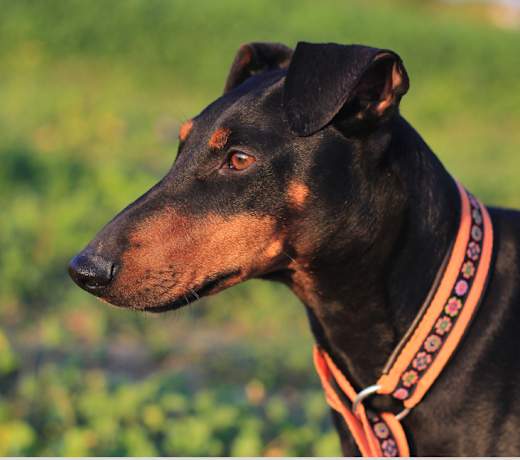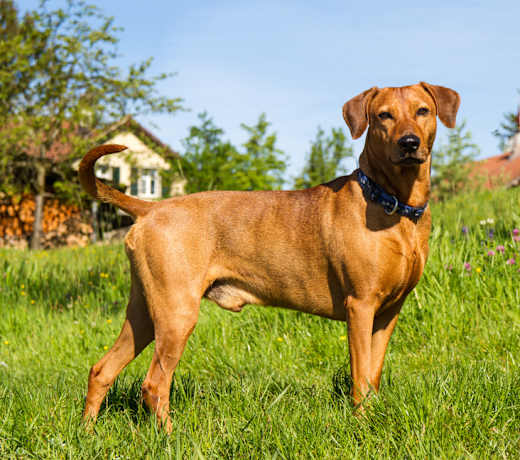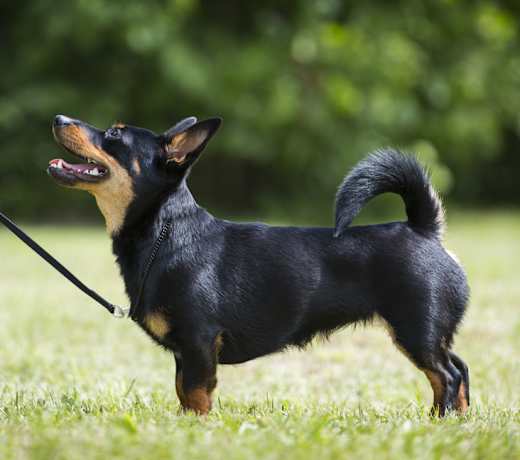No, Miniature Pinschers are not hypoallergenic. While they have short coats that shed minimally, they still produce dander, a common allergen for people with allergies to dogs. Individuals with allergies should spend time with a Miniature Pinscher before committing to ensure they don’t experience allergic reactions.
Miniature Pinscher
Breed Type: Toy
Common nicknames: Min Pin
Coat: Smooth
Hypoallergenic: No, they will likely trigger allergies.
Temperament: Intelligent, energetic, loyal, independent
Life expectancy: 12-16 years
Color & patterns:
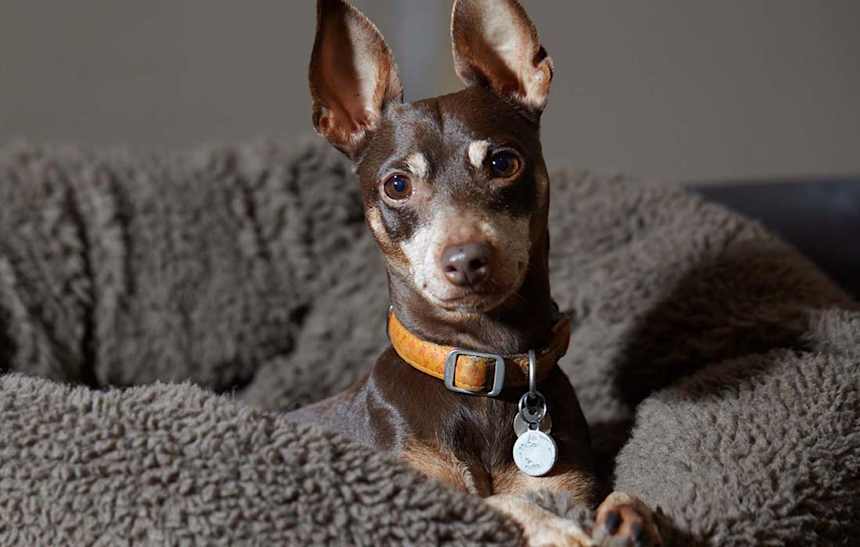
Meet the mighty Miniature Pinscher, a small but spirited dynamo bursting with personality. These little fireballs have fearless natures and energetic spirits. Despite their small size, Miniature Pinschers are agile and athletic, making them excellent competitors in dog sports such as agility and obedience trials. Miniature Pinschers are quick learners known for their intelligence, which makes training a rewarding and enjoyable experience. Originating from Germany, these delightful dogs were initially bred as fearless rat hunters but quickly became cherished family pets. They form strong bonds with their families and are devoted companions. Miniature Pinschers are protective of their loved ones and excel as watchdogs, alerting their pet parents to potential dangers. With their lively spirit and unwavering loyalty, these pups might be a perfect match for you.
Miniature Pinscher characteristics
Learn about about Miniature Pinscher basics like their fur colors, shedding levels, how much grooming they need, and other Miniature Pinscher facts.
Average height
10-12 inches (25.4-30.5cm)
Average weight
4-12 pounds (1.8-5.4 kg)
Average lifespan
12-16 years
Exercise needs
Grooming needs
Full-grown size
Good with cats
Good with kids
Training Aptitude
Do Miniature Pinschers shed?
Yes, Miniature Pinschers shed, but very minimally compared to breeds with longer or thicker fur. Regular grooming and brushing can help minimize shedding and keep their coat healthy.
What colors do Miniature Pinschers come in?
Miniature Pinschers come in solid red, stag red (a red with black hairs mixed in), black with rust markings, chocolate with rust markings, and blue with rust markings. These colors may appear in solid patterns or with tan or rust points.
How big do Miniature Pinschers get?
Miniature Pinschers weigh between eight and 11 pounds and stand between 10 and 12 inches tall. While some Mins Pins may fall outside of these ranges, this toy breed is known for its small, sturdy build.
When do Miniature Pinschers stop growing?
Miniature Pinschers stop growing around 12 months of age. They commonly reach their full height by around six to eight months, but they may continue to fill out and develop muscle mass until they reach 12 to 18 months of age.
How long do Miniature Pinschers live?
Miniature Pinschers live between 12 to 16 years, though this varies based on genetics, diet, exercise, and overall health. Providing proper veterinary care, a balanced diet, regular exercise, and maintaining a healthy lifestyle can contribute to ensuring a Miniature Pinscher lives a long and fulfilling life.
Miniature Pinscher temperament
Learn about about the Miniature Pinscher temperament and how well they fit into your lifestyle, home environment, and family.
Do Miniature Pinschers like to cuddle?
Yes, Miniature Pinschers can enjoy cuddling, but they also have an independent nature and may not always seek out cuddle time. Each dog’s personality varies, so while some Miniature Pinschers may be more inclined to cuddle, others may prefer their own space.
Are Miniature Pinschers good dogs?
Yes, Miniature Pinschers are good dogs. They are intelligent, energetic, and loyal dogs, but they also have a bold and independent nature that requires consistent training and socialization. With proper care, attention, and training, Miniature Pinschers can make loving pets for individuals or families.
Are Miniature Pinschers good with kids?
Yes, Miniature Pinschers can be good with kids, especially when raised together and given proper training and socialization by their pet parents. However, due to their small size and lively nature, this breed may not be suitable for homes with very young children who may accidentally handle them roughly. Teaching children how to properly approach and handle dogs is crucial to ensure positive experiences for both the dog and the child.
As with any breed, it is recommended that your child is always supervised when interacting with your dog to keep both the child and dog safe.
Are Miniature Pinschers good family dogs?
Yes, Miniature Pinschers can make good family dogs. They are loyal, energetic, and affectionate companions, but may not be the best fit for families with very young children due to their small size and sometimes assertive personality. Pet parents should always supervise interactions between any dogs and kids to ensure that both the dog and the child understand how to behave appropriately around each other.
Are Miniature Pinschers aggressive?
No, Miniature Pinschers are not aggressive, but they can be assertive or reactive if not properly trained and socialized. When raised in a loving and nurturing environment and properly socialized, Mini Pins are typically friendly, affectionate, and well-adjusted companions.
Are Miniature Pinschers easy to train?
No, Miniature Pinschers aren’t known to be easy to train. They are intelligent dogs, but they can also be independent and stubborn, which may make training a bit challenging.
However, training any dog takes substantial time and effort, regardless of breed. Consistent and positive reinforcement-based training methods, along with patience and firmness, can help Miniature Pinschers overcome challenges and lead to successful obedience training.
Do Miniature Pinschers get attached to one person?
Yes, Miniature Pinschers are known for becoming attached to one person in the household. However, they are also sociable dogs and can form close relationships with multiple family members if given attention and affection.
Do Miniature Pinschers bark a lot?
Yes, Miniature Pinschers bark a lot, especially when they perceive something unfamiliar or want attention. Early training and socialization can help manage their barking tendencies, but they may still vocalize more than some other breeds.
Are Miniature Pinschers good with cats?
Yes, Miniature Pinschers can be good with cats if they are introduced to them properly and early in life. However, their natural prey drive may lead them to chase small animals, including cats, especially if they haven’t been socialized with them from a young age.
Are Miniature Pinschers good with other dogs?
Miniature Pinschers can get along well with other dogs, especially if they are socialized early and properly trained. However, their assertive and sometimes dominant nature means they may not always tolerate the presence of other dogs, particularly if they perceive them as a threat to their territory or status. Supervised introductions and ongoing socialization can help Miniature Pinschers develop positive relationships with other dogs.
Are Miniature Pinschers smart?
Yes, Miniature Pinschers are smart. They are quick learners and can pick up commands and tricks with proper training and consistency.
Can Miniature Pinschers swim?
Yes, Miniature Pinschers can swim, but they are not known as strong swimmers due to their small size and short legs. Their thin coat and low body fat also make them more susceptible to getting chilled in cold water. With proper introduction and supervision, some Miniature Pinschers can learn to swim and may enjoy water activities in shallow areas.
Why do Miniature Pinschers burrow under blankets?
Miniature Pinschers burrow under blankets due to their ancestry as den-dwelling dogs. Burrowing under blankets provides them with a sense of security and warmth, similar to being in a den or nest. It may also help regulate their body temperature and provide a comforting environment for rest and relaxation.
Do Miniature Pinschers like to be held?
Yes, some Miniature Pinschers enjoy being held, especially if they have enjoyed close contact from a young age. However, due to their independent nature, not all Miniature Pinschers may appreciate being held for extended periods. It ultimately depends on the individual dog’s temperament and preferences.
What do Miniature Pinschers eat?
Miniature Pinschers should eat a balanced diet formulated for small-breed dogs, which typically includes high-quality commercial dog food. Look for formulations specifically tailored to their size, age, and activity level. Consult with a veterinarian to understand the best diet for your Miniature Pinscher.
Miniature Pinscher history
Learn about where the Miniature Pinscher came from.
What were Miniature Pinschers bred for?
Miniature Pinschers were originally bred as ratters and watchdogs, tasked with hunting and eliminating small vermin such as rats and mice. Their compact size, agility, and fearless nature made them well-suited for this role, allowing them to excel in keeping homes and stables free of pests.
Where do Miniature Pinschers come from?
Miniature Pinschers originated in Germany, where they were developed in the 19th century. They are believed to be descendants of older German Pinscher breeds crossed with smaller terrier-type dogs to create a compact, spirited breed known for its agility and ratting abilities. Despite the breed’s name, it’s not a miniature version of the Doberman Pinscher, but rather a distinct breed.
Miniature Pinscher health
Learn about about the Miniature Pinscher health outlook and what diseases they may be prone to at various stages of their life.
What health problems do Miniature Pinschers have?
Miniature Pinschers are prone to certain health problems, including:
Hip and/or elbow dysplasia: Hip and elbow dysplasia are two of the most common skeletal diseases seen in dogs. They are similar diseases in which either the hip or elbow joint has grown abnormally or is misshapen. The abnormal shape prevents the joints and sockets from properly meeting one another, resulting in rubbing and grinding instead of sliding smoothly. Unlike in hip dysplasia, where the main problem is joint instability, the abnormalities seen in elbow dysplasia often result in pieces of bone and/or cartilage breaking loose and irritating the joint tissues. Over time, the rubbing from dysplasia can cause a variety of issues, such as pain, lameness, and secondary osteoarthritis. Surgery can be done to fix the joint if diagnosed before the onset of arthritis. If you are rescuing a Miniature Pinscher, have them checked out by a vet to see if they have or are prone to getting dysplasia so you know what they will be able to handle in terms of activities and exercise.
Legg-Calve-Perthes disease: This condition involves the degeneration of the hip joint, leading to pain, lameness, and difficulty walking. It typically manifests during puppyhood or young adulthood and may require surgical intervention to alleviate discomfort.
Patellar luxation: Patellar luxation is a condition where the kneecap (patella) dislocates or moves out of its normal position, causing intermittent lameness and discomfort. It can range from mild to severe and may necessitate surgical correction to prevent long-term joint damage.
Progressive retinal atrophy (PRA): PRA is a hereditary eye disorder characterized by the degeneration of retinal cells, leading to progressive vision loss and eventual blindness. Regular veterinary check-ups and genetic testing can help identify affected dogs and manage the condition.
Hypothyroidism: In this condition, the thyroid gland doesn’t produce enough hormones, leading to symptoms such as weight gain, lethargy, and skin issues. Treatment typically involves lifelong medication to regulate hormone levels and manage symptoms.
Mucopolysaccharidosis type VI: MPS VI is classified as a lysosomal storage disease, a disorder that prevents certain metabolic enzymes necessary for normal bodily function from being produced by the body. Dogs with MPS VI are unable to process sugar molecules properly. The disorder will cause unprocessed sugar molecules to build up in the body and lead to deformed joints, as well as a deformed spine and sternum. It can also cause eye cloudiness and facial deformity.
How long can a Miniature Pinscher be left alone?
Miniature Pinschers can be left alone for about four to six hours, depending on their age, training, and individual temperament. They are social dogs and may become anxious or bored if left alone for extended periods. It’s essential to provide mental stimulation, exercise, and a safe environment when leaving them alone to prevent behavioral issues.
Popular Miniature Pinscher mixes
Breeds that mix with Miniature Pinschers include Shetland Sheepdogs, Shiba Inus, and Shih Tzus. Other breeds you may see mixed with Miniature Pinschers include:
Sheltie Pin (Miniature Pinscher + Shetland Sheepdog)
Shiba Pin (Miniature Pinscher + Shih Tzu)
Silky-Pin (Miniature Pinscher + Silky Terrier)
Smooth Fox Pinscher (Miniature Pinscher + Smooth Fox Terrier)
Toy Fox Pinscher (Miniature Pinscher + Toy Fox Terrier)
Wire Fox Pinscher (Miniature Pinscher + Wire Fox Terrier)
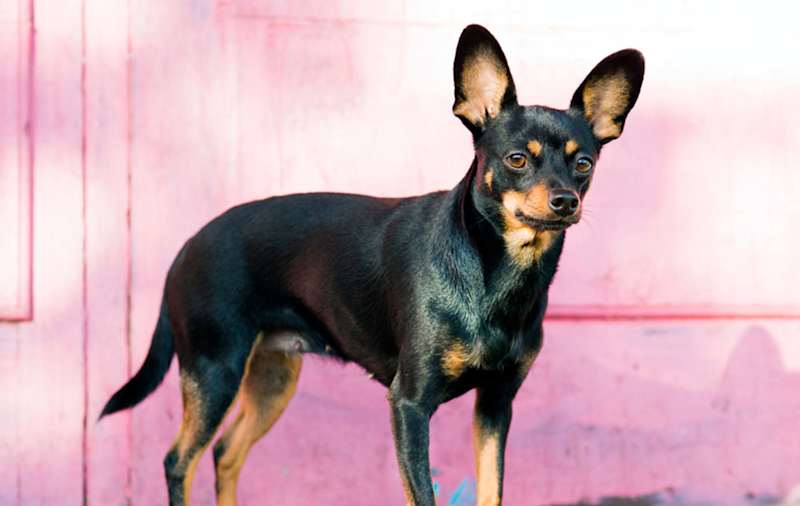
Find Miniature Pinscher puppies near you
Adopting a Miniature Pinscher
Learn about acquiring a Miniature Pinscher - the pros and cons of adopting versus going through a breeder, and associated costs.
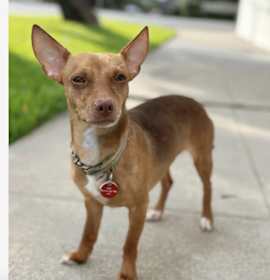
Bobby
Miniature Pinscher Mixed Breed (Small)
Male, 1 yr 11 mos
Los Angeles, CA
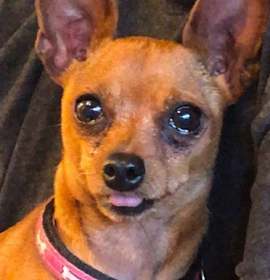
Lily & Scarlet
Miniature Pinscher
Female, 9 yrs 9 mos
Los Angeles, CA
Good with dogs
House-trained
Spayed or Neutered
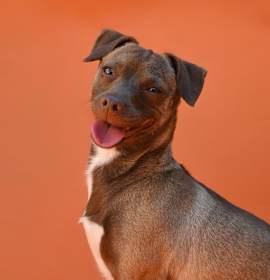
Godiva
Miniature Pinscher Mixed Breed (Medium)
Female, 1 yr 5 mos
Los Angeles, CA
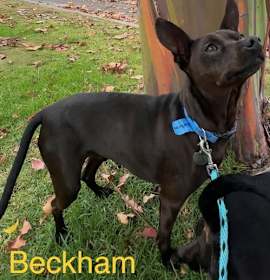
Beckham and Cooper
Miniature Pinscher
Male, adult
Los Angeles, CA
Good with dogs
House-trained
Spayed or Neutered

Debo
Miniature Pinscher
Male, young
Los Angeles, CA
Not good with dogs
Needs experienced adopter
House-trained
Spayed or Neutered
Shots are up-to-date
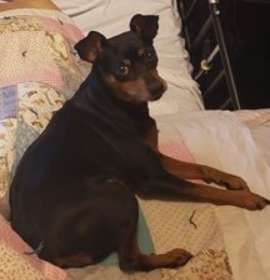
COOKIE-Special Needs
Miniature Pinscher
Female, 12 yrs 3 mos
Los Angeles, CA
Good with cats
Needs special attention
House-trained
Spayed or Neutered
Shots are up-to-date
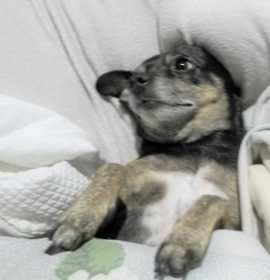
Henriette-URGENT
Miniature Pinscher
Female, 12 yrs 1 mo
Los Angeles, CA
Needs special attention
House-trained
Spayed or Neutered
Shots are up-to-date

Charlie. B
Miniature Pinscher Miniature Pinscher
Male, 11 mos
Glendale, CA
Good with dogs
Good with cats
House-trained
Spayed or Neutered
Shots are up-to-date

Bobby
Miniature Pinscher Mixed Breed (Small)
Male, 1 yr 11 mos
Los Angeles, CA

Lily & Scarlet
Miniature Pinscher
Female, 9 yrs 9 mos
Los Angeles, CA
Good with dogs
House-trained
Spayed or Neutered

Godiva
Miniature Pinscher Mixed Breed (Medium)
Female, 1 yr 5 mos
Los Angeles, CA

Beckham and Cooper
Miniature Pinscher
Male, adult
Los Angeles, CA
Good with dogs
House-trained
Spayed or Neutered

Debo
Miniature Pinscher
Male, young
Los Angeles, CA
Not good with dogs
Needs experienced adopter
House-trained
Spayed or Neutered
Shots are up-to-date

COOKIE-Special Needs
Miniature Pinscher
Female, 12 yrs 3 mos
Los Angeles, CA
Good with cats
Needs special attention
House-trained
Spayed or Neutered
Shots are up-to-date



